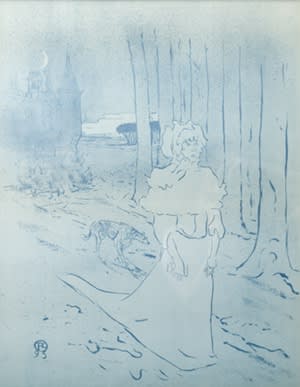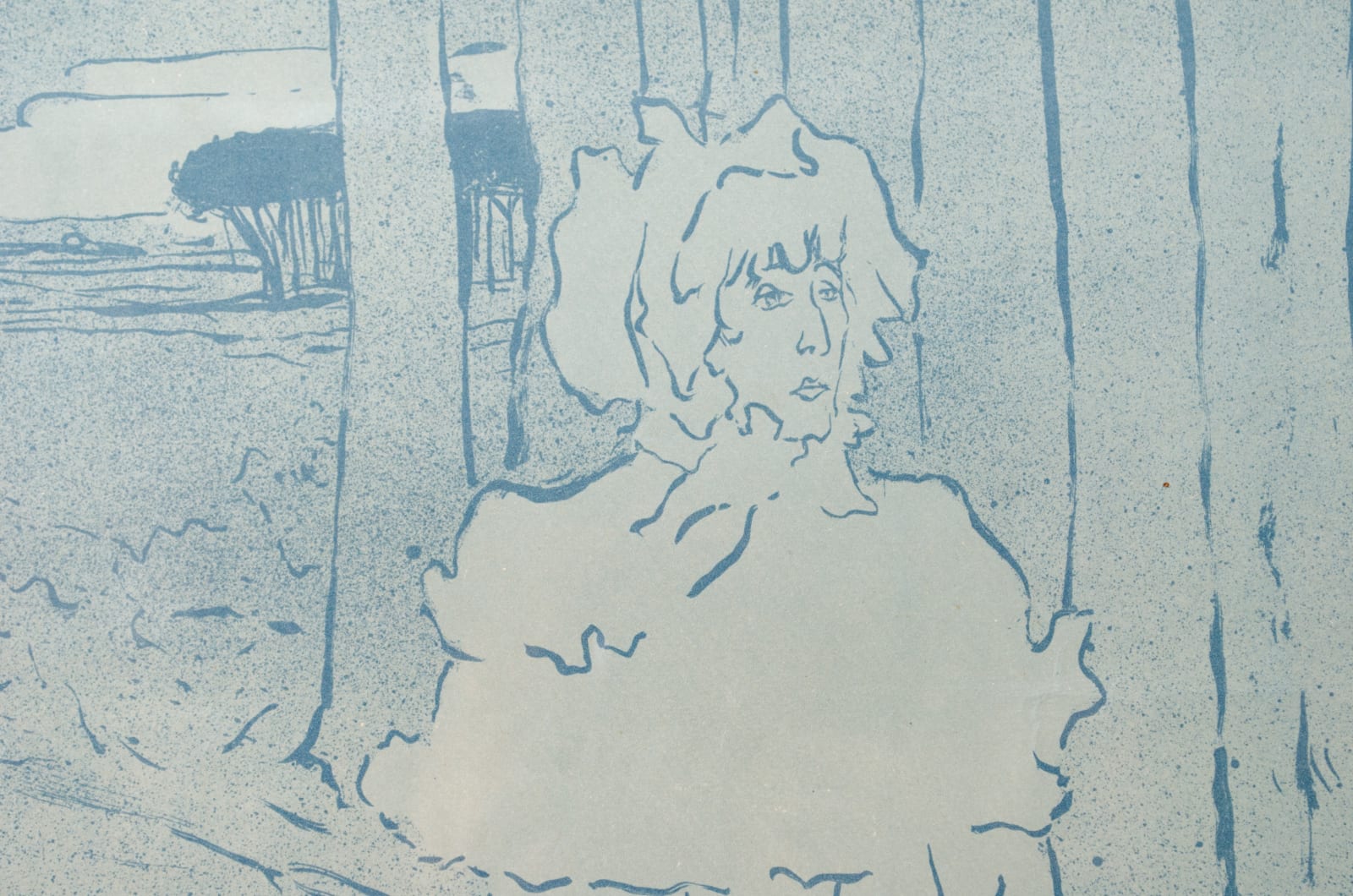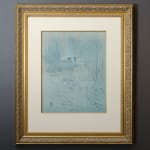Toulouse Lautrec 1864-1901
1895
Further images
LA CHATELAINE, OR LE TOCSIN, 1895, a first state lithograph in blue monochrome; the artist’s mark and date “95” in the plate in the lower left.
Toulouse-Lautrec produced this lithographic image in 1895, at the height of poster mania in Belle Epoque France. The 1890s saw the poster become the principal vehicle for a new mode of modern art, the art of advertisement, in which fine artists expanded their reach to include commerce. Not only did fine artists create stunning images to help market various products and services for sale, the poster itself became a highly collectible object. By the time Toulouse-Lautrec created this image for the journal, “La Depeche de Toulouse,” to announce publication of the serial, “Le Tocsin, “ written by Jules de Gastyne, enthusiastic poster collectors had created a market for such posters. Collectors preferred posters in pristine condition; the most coveted were lithographs which had never been glued or actually posted. With this in mind, artists such as Toulouse-Lautrec, who was especially popular, would sometimes produce a first state of the image for poster aficionados.
In the case of this lithograph, it is not known how many were printed; however, this is a rare image according to Delteil. This first state contains no text. In its second printed state, the words “La Depeche” and “Le Tocsin” have been boldly added in color as well as the printer’s stamp, “Imp. Cassan fils, Toulouse”. Toulouse-Lautrec uses imagery and style in keeping with the spirit of the story’s Gothic romance theme. Diagonal lines and sparse, calligraphic-like marks suggest movement and lend a quality of uneasiness to augment the other visual clues. The stony-faced proprietress of the chateau, “La Chatelaine,” who clutches a letter in her hand, fixes her gaze intently ahead as a skinny greyhound follows. They are heading into the forest away from the castle whose turret and fortified wall appears in the background. It is evening and a crescent moon is rising ominously in the night sky just above a bell. “Le Tocsin”, an alarm bell, is indeed the title of Gastyne’s story.
As a brilliant contrast to all of this gothic detail and frenzy, Toulouse-Lautrec situates the figure of “La Chatelaine” in the center of the image to create tension in the design and instantly grab the viewer’s attention. He utilizes his signature economy of line to create bold, flat planes of form. As in classic Japanese printmaking, by which Toulouse-Lautrec and other fine artists from this era were influenced, he balances bold areas of color with unprinted areas elevating the importance of negative space. Toulouse-Lautrec reigned in the 1890s as the master of the graphic medium, creating iconic images of female subjects such as Jane Avril, May Milton, May Belfort and other performers in Paris’s Montmartre; in this first state of “Le Tocsin,” Toulouse-Lautrec proves that his scope goes far beyond the demimonde of Parisian nightlife and delights with yet another memorable female star.







